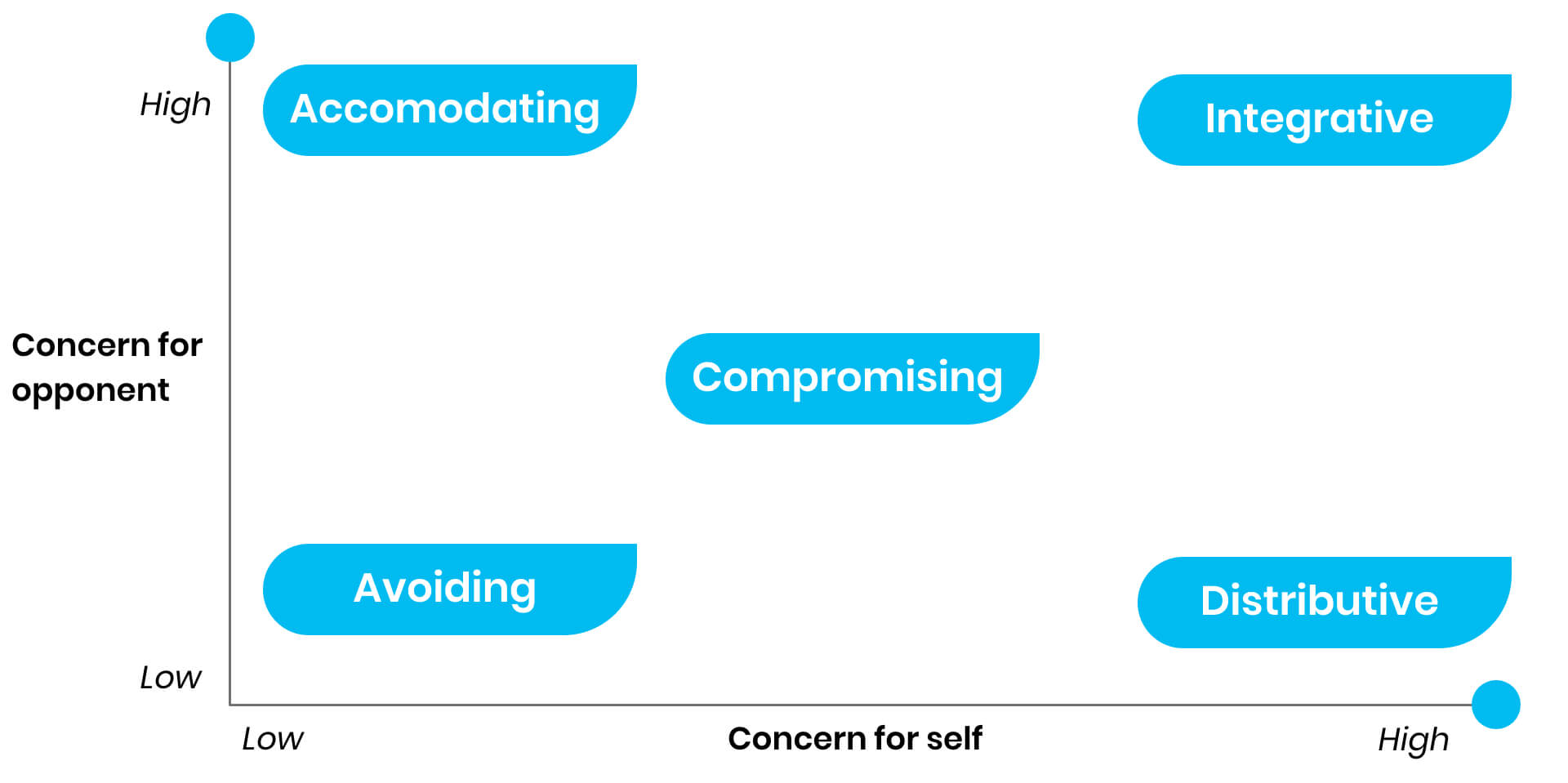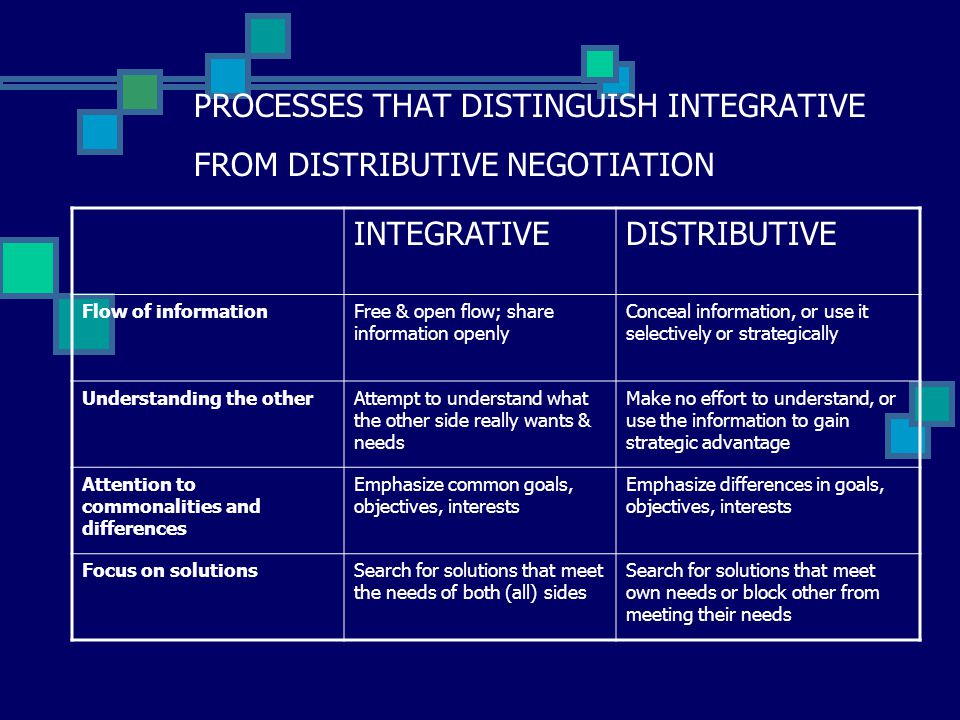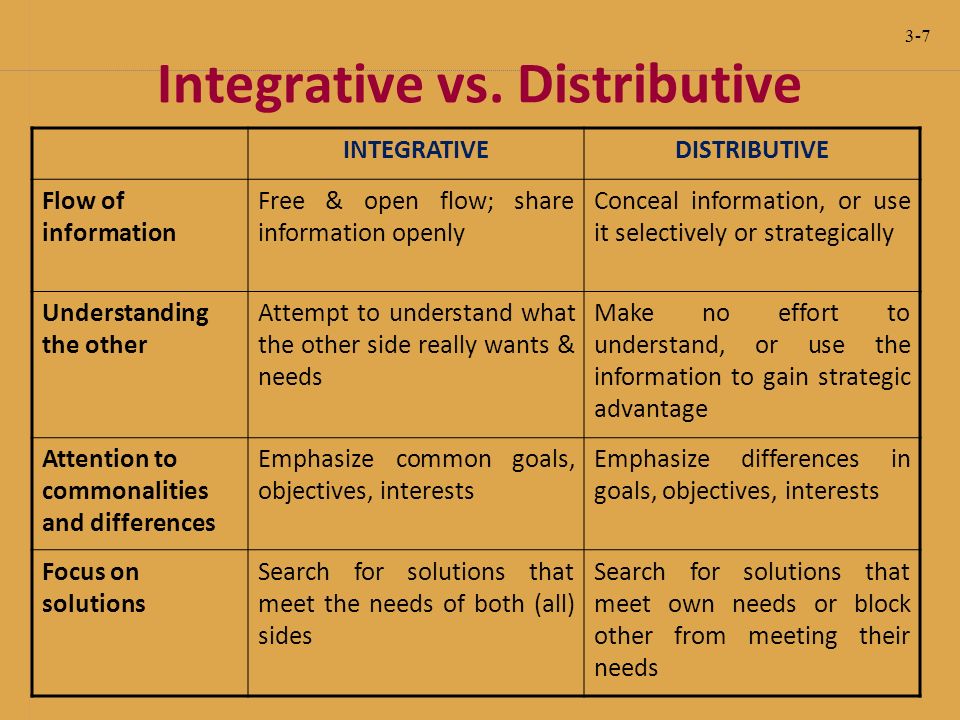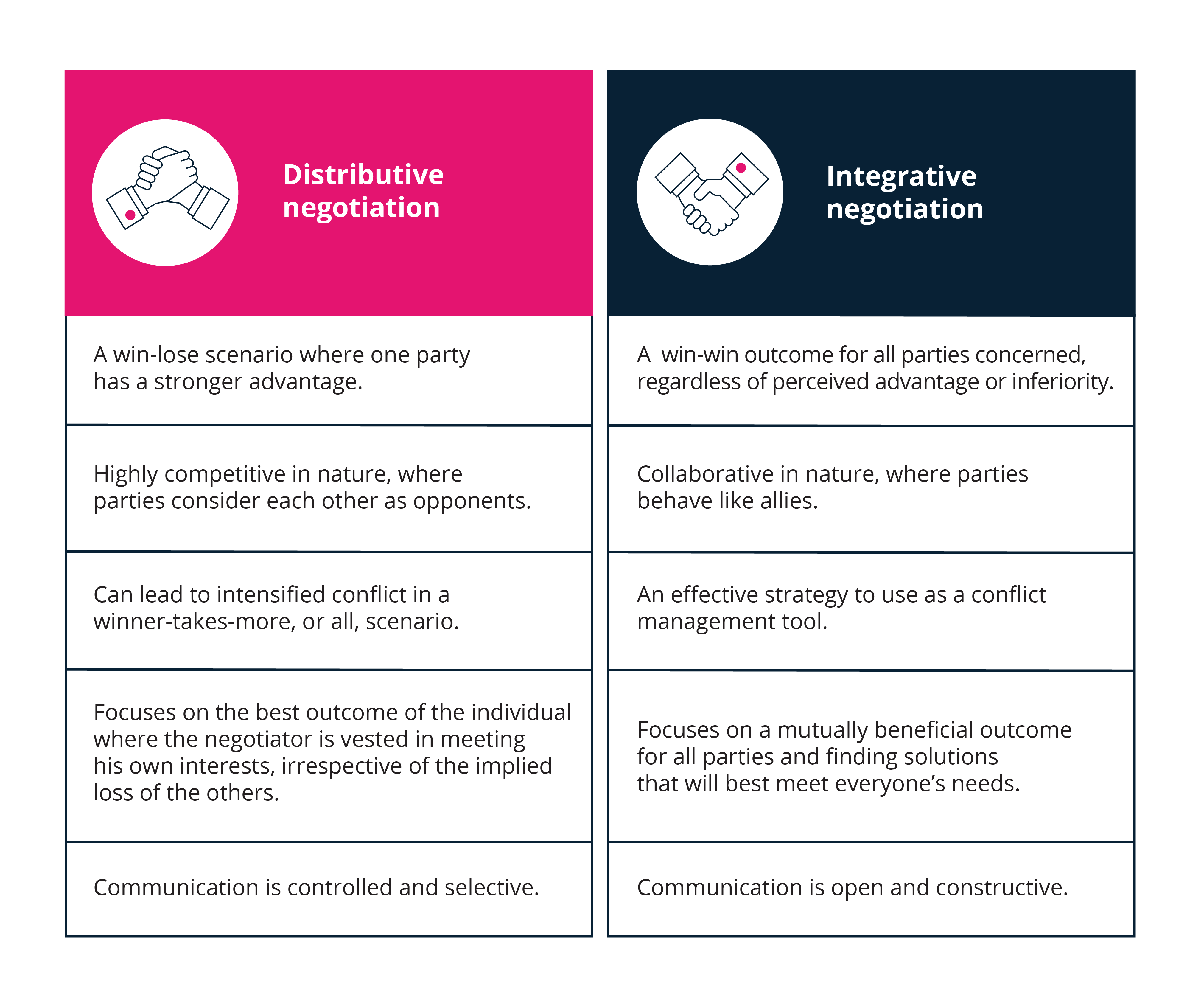Distributive bargaining and integrative bargaining are two different approaches to negotiation that can be used in a variety of contexts, including business, politics, and personal relationships. In distributive bargaining, the focus is on dividing a fixed pie, with each side trying to get the largest possible share for themselves. This type of negotiation is often characterized by competition, positional bargaining, and an emphasis on individual interests.
On the other hand, integrative bargaining, also known as interest-based or win-win negotiation, is focused on finding mutually beneficial solutions that meet the needs and interests of all parties involved. This approach is more collaborative, with a focus on finding common ground and building relationships.
Distributive bargaining is often used in situations where the resources being negotiated are limited and there is a zero-sum outcome, meaning that one side's gain is the other side's loss. For example, if two companies are negotiating the price of a product, the distributive approach would be for each side to try to get the best deal for themselves, with one company trying to sell the product for as high a price as possible and the other company trying to buy it for as low a price as possible.
One of the main drawbacks of distributive bargaining is that it can create an adversarial relationship between the parties involved, as each side is focused on maximizing their own interests at the expense of the other side. This can lead to a breakdown in communication and a lack of trust, which can make it difficult to find mutually beneficial solutions.
In contrast, integrative bargaining is focused on finding mutually beneficial solutions that meet the needs and interests of all parties involved. This approach is often used in situations where the resources being negotiated are not limited, or where the parties have a long-term relationship and want to find ways to work together in the future.
One of the key benefits of integrative bargaining is that it can create a more collaborative relationship between the parties involved, as they are focused on finding solutions that work for everyone. This can lead to better communication and a stronger sense of trust, which can help to build long-term relationships and create a more productive and positive working environment.
Overall, distributive bargaining and integrative bargaining are two different approaches to negotiation that can be used in a variety of contexts. While distributive bargaining is often used in situations where resources are limited and there is a zero-sum outcome, integrative bargaining is focused on finding mutually beneficial solutions that meet the needs and interests of all parties involved. Whether you choose to use distributive or integrative bargaining will depend on the specific circumstances of the negotiation and the goals you hope to achieve.







